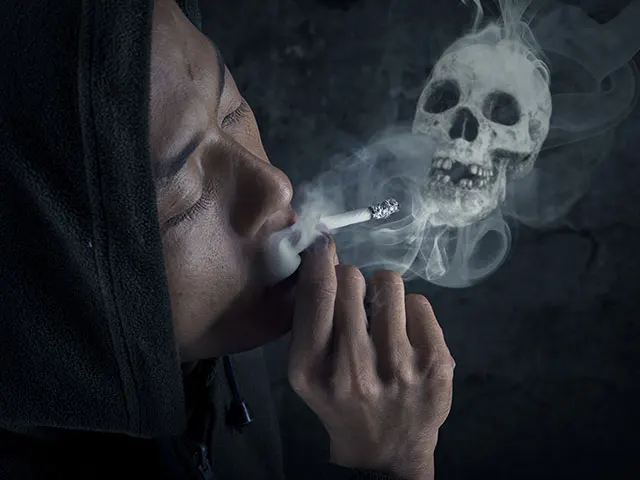Understanding Passive Smoking and Its Profound Impact on Lung Health

In today's society, where the hazards of smoking are widely acknowledged, there's another aspect of tobacco exposure that often goes unnoticed but poses significant health risks: passive smoking. Passive smoking, also known as second-hand smoke, occurs when individuals involuntarily inhale the smoke exhaled by active smokers or from burning tobacco products. While the focus has primarily been on the health consequences for smokers themselves, it's crucial to recognize the detrimental effects that passive smoking can have on nonsmokers, particularly concerning lung health.
The Silent Danger of Second-Hand Smoke
Passive smoking exposes individuals to a complex mixture of toxic chemicals and carcinogens found in cigarette smoke. Research has unequivocally linked exposure to second-hand smoke with an increased risk of numerous respiratory conditions and diseases, including lung cancer, chronic obstructive pulmonary disease (COPD), asthma, and respiratory infections.
The Risks for Nonsmokers: Unveiling the Truth

Contrary to common perception, nonsmokers are not immune to the health consequences of tobacco smoke. Studies have shown that nonsmokers exposed to second-hand smoke face a heightened risk of developing lung cancer, with the risk increasing proportionally to the duration and intensity of exposure. Moreover, passive smoking has been associated with exacerbating existing respiratory conditions and compromising lung function, leading to symptoms such as coughing, wheezing, and shortness of breath.
Side Effects of Passive Smoking
-
Lung Cancer (with long-term exposure): Prolonged exposure to secondhand smoke increases the risk of developing lung cancer, making it a serious concern for nonsmokers who regularly inhale cigarette smoke.
-
Heart diseases such as stroke: Passive smoking has been linked to an increased risk of heart diseases, including stroke, due to its detrimental effects on cardiovascular health.
-
Chronic diseases like chronic obstructive lung diseases: Exposure to secondhand smoke can contribute to the development or exacerbation of chronic respiratory conditions such as chronic obstructive pulmonary disease (COPD), leading to long-term breathing difficulties and reduced quality of life.
-
Asthma: Passive smoking can trigger asthma attacks and worsen asthma symptoms in both children and adults, making it particularly problematic for individuals with this respiratory condition.
-
Allergies: Secondhand smoke exposure may lead to allergic reactions, causing symptoms such as itching in the eyes, nasal congestion, ear fullness, sinusitis, and rhinitis, further compromising respiratory health.
-
Breathing issues: Nonsmokers exposed to secondhand smoke may experience various respiratory symptoms, including coughing, wheezing, and shortness of breath, impacting their ability to breathe comfortably.
-
Disturbed menstrual cycle: Passive smoking has been associated with disruptions in the menstrual cycle among women, highlighting its potential hormonal effects and broader impact on reproductive health.
-
Poor oral health: Exposure to secondhand smoke can contribute to poor oral health, increasing the risk of dental problems such as gum disease and tooth decay.
Understanding these side effects underscores the importance of minimizing exposure to secondhand smoke and advocating for smoke-free environments to protect respiratory and overall health.
Children: Especially Vulnerable

Children represent one of the most vulnerable populations when it comes to the adverse effects of passive smoking. Their developing lungs are particularly susceptible to the harmful substances present in tobacco smoke. Prolonged exposure to second-hand smoke during childhood has been linked to an increased risk of respiratory infections, asthma development, and impaired lung growth and function. Additionally, children exposed to passive smoking may experience more severe asthma symptoms, such as frequent exacerbations and reduced responsiveness to treatment.
Asthma: A Growing Concern
Asthma, a chronic respiratory condition characterized by inflammation and narrowing of the airways, is significantly impacted by passive smoking. Exposure to second-hand smoke can trigger asthma attacks, exacerbate symptoms, and increase the frequency and severity of respiratory distress. Children with asthma who are exposed to passive smoking are more likely to require hospitalization and emergency medical intervention, highlighting the critical importance of minimizing tobacco exposure in their environments.
The Impact on Lung Function

Even in asymptomatic nonsmokers, passive smoking can adversely affect lung function and respiratory health. Studies have demonstrated that exposure to second-hand smoke is associated with decreased lung function, increased airway resistance, and heightened bronchial hyper-responsiveness, all of which contribute to respiratory symptoms and impaired breathing. These effects can persist over time and may predispose individuals to a higher risk of developing respiratory conditions later in life.
Taking Action for Better Lung Health
Addressing the issue of passive smoking requires concerted efforts at individual, community, and policy levels. Raising awareness about the risks of second-hand smoke, implementing smoke-free environments in public spaces, and supporting smoking cessation programs are essential steps in reducing tobacco exposure and protecting lung health. By advocating for smoke-free policies and promoting healthy environments, we can create safer spaces for nonsmokers and mitigate the adverse effects of passive smoking on lung health.
Myths vs. Facts: Dispelling Misconceptions
Despite widespread awareness of the dangers of passive smoking, misconceptions persist. It's essential to debunk myths surrounding second-hand smoke.
| Myth | Fact |
|---|---|
| Secondhand smoking is safe. | No, it's as dangerous as active smoking. |
| You will not inhale smoke around smokers. | If a person smokes close to you, you're likely to inhale the smoke. |
| Using an air purifier protects from secondhand smoking. | Air purifiers may remove smell, but not harmful chemicals in smoke. |

By disseminating accurate information and challenging misconceptions, we can foster a better understanding of the risks associated with passive smoking and encourage proactive measures to mitigate its impact.
Passive smoking is not merely a nuisance but a significant public health concern with far-reaching consequences for respiratory health. By acknowledging the risks, advocating for smoke-free environments, and supporting initiatives to reduce tobacco use, we can work towards protecting lung health and creating a healthier future for all.

